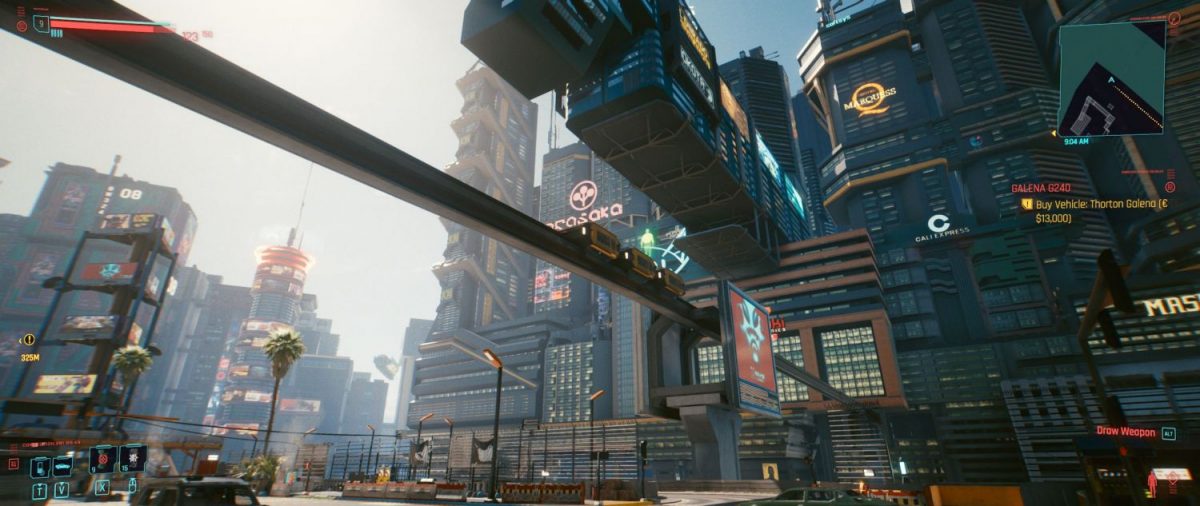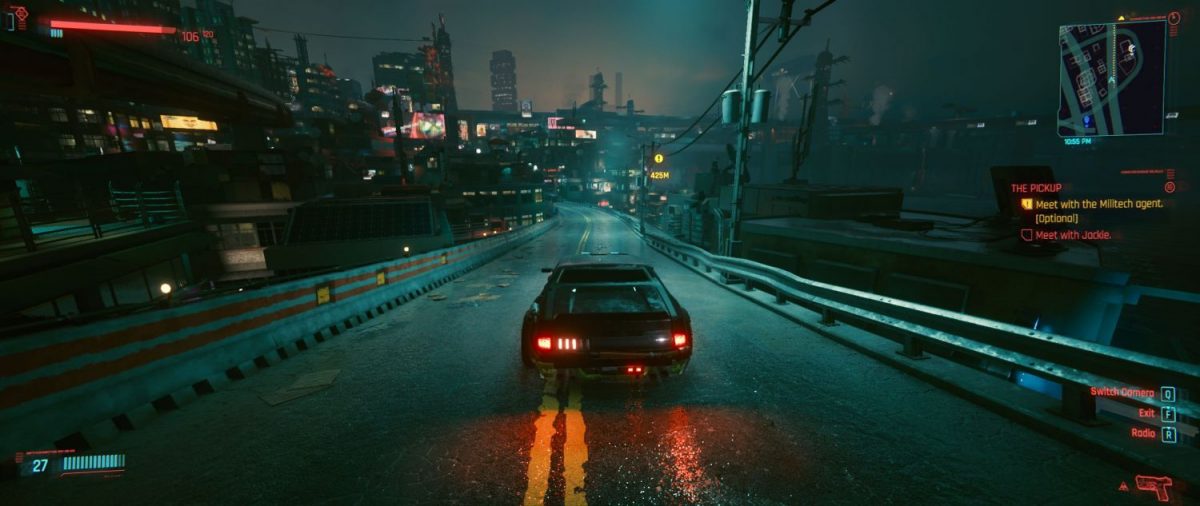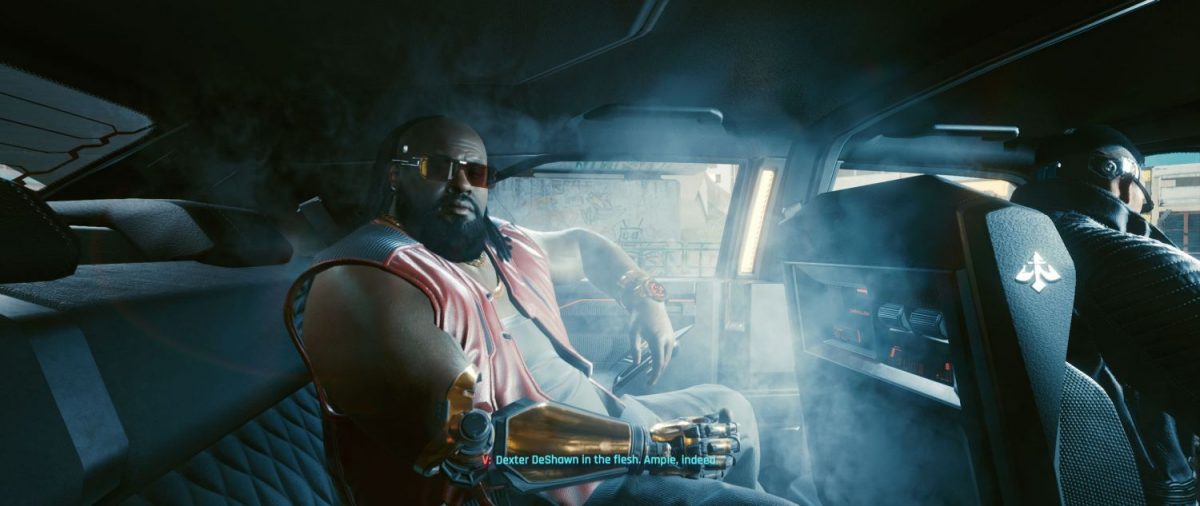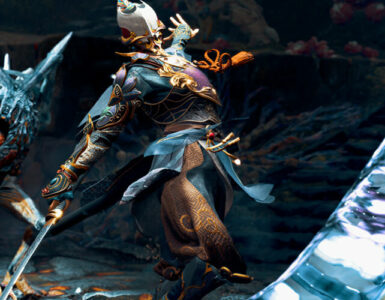Disclaimer: this review was written with an early review copy of Cyberpunk 2077, and as such any bugs we may have encountered here may be addressed thanks to the Day One patch that will be released at launch on 10 December.
It has always been in human nature to think about what might happen tomorrow, or in a few weeks – or maybe even half a century later. This fascination with the future has long been ingrained into our fantasies, which is why you have the likes of Stanley Kubrick’s 2001: A Space Odyssey and Ridley Scott’s Blade Runner dominating our screens in the West, or the likes of Akira, Ghost in the Shell, and Cowboy Bebop in the East.
It’s a universal thing, this desire to see just what tomorrow might hold for us. Interestingly, all these possible futures presented by most of the above films and TV series all give us a glimpse of a more bleak, if not more convenient, future than we’d imagined.
Perhaps no other medium has tried to embrace this aspect of our fantasies more than video games. After all, it’s not just enough to simply watch Rick Deckard streak through the cityscape of Los Angeles — we want to literally be there and partake in the action ourselves. That’s why you have games such as Deus Ex and Mass Effect, where players can literally walk around, talk, breathe, fight, and interact with this potential future, both good and bad.
So when the folks at CD Projekt Red announced that they would be making Cyberpunk 2077, gamers could not get any more excited. After delivering the medieval masterpiece The Witcher 3 back in 2015, expectations were set as high as the towering skyscrapers in the game’s fictional Night City itself.
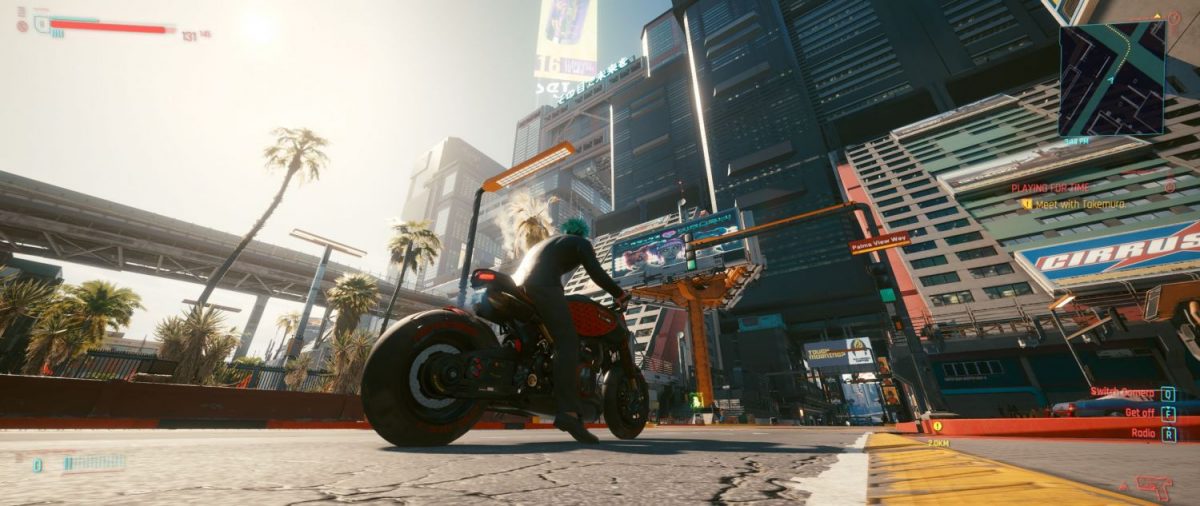
After nearly 5 years of increasingly aggressive marketing, spearheaded by none other than Keanu Reeves himself, as well as multiple delays across 2020, ithe immense hype building over this game worth is at an end, but has the journey been worth it?
As a TL;DR: yes, it is. And let’s just say you might even crave for more after getting hit in the face by the game’s scintillating opening hours.
So let’s get into it. Cyberpunk 2077 is a sprawling first-person RPG (think The Elder Scrolls meets Deus Ex) that puts you in the shoes of V, an up-and-coming mercenary who aims to climb to the top of the typically cutthroat social ladder in the pit of chaos that is Night City, a fictional dystopian reimagination of San Francisco as we know it today.
To do it, V has to shoot, beat, sneak, or talk their way up (usually a combination of all of the above) the ranks of Night City’s biggest, leanest and meanest. However, a personal tragedy gets in the way of the best laid plans mid-societal-climb, as is the presence of essentially what is the cybernetic equivalent of a ghost – that of dead rockstar-turned-freedom-fighter Johnny Silverhand (played by Keanu Reeves) – literally gets stuck in your head. So as the result of trying to live the fast life, you’re caught in dilemma after dilemma, and you will have to sort things out in and out of your head before it’s too late.
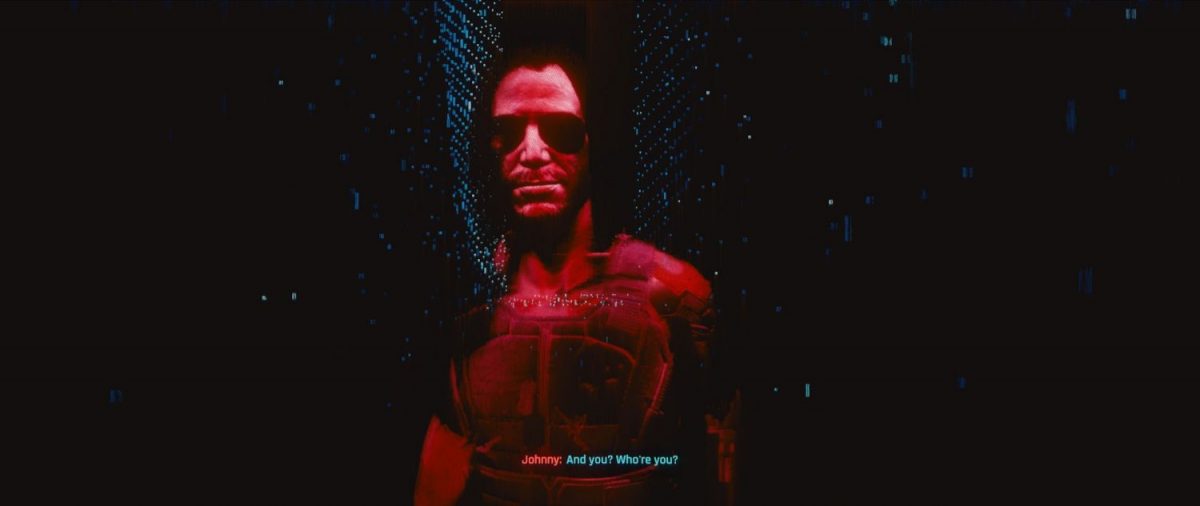
CD Projekt Red needs no introduction, as they have become the masters of storytelling, given its accomplishments in The Witcher franchise, and Cyberpunk 2077 is no exception. The game’s story is structured into three main acts, with a prologue that acts as a jumping-on point for players. After picking among three background options (Corpo, Nomad, and Street Kid), each with their own unique introduction and starting area, you are then thrust headlong into an action- and dialogue-packed first two hours.
The game truly opens up by the second act, which gives you a little more freedom in which to pursue which quests you want to take up, as different quest lines open up at different points, and advance specific ending requirements once completed, which will converge and be resolved in a dramatic and – for lack of a better term – interesting finale. While we won’t get too deep into story details, expect to make some hard choices that will leave you absolutely satisfied, but also dying to get back into it with a second (and even third) playthrough.
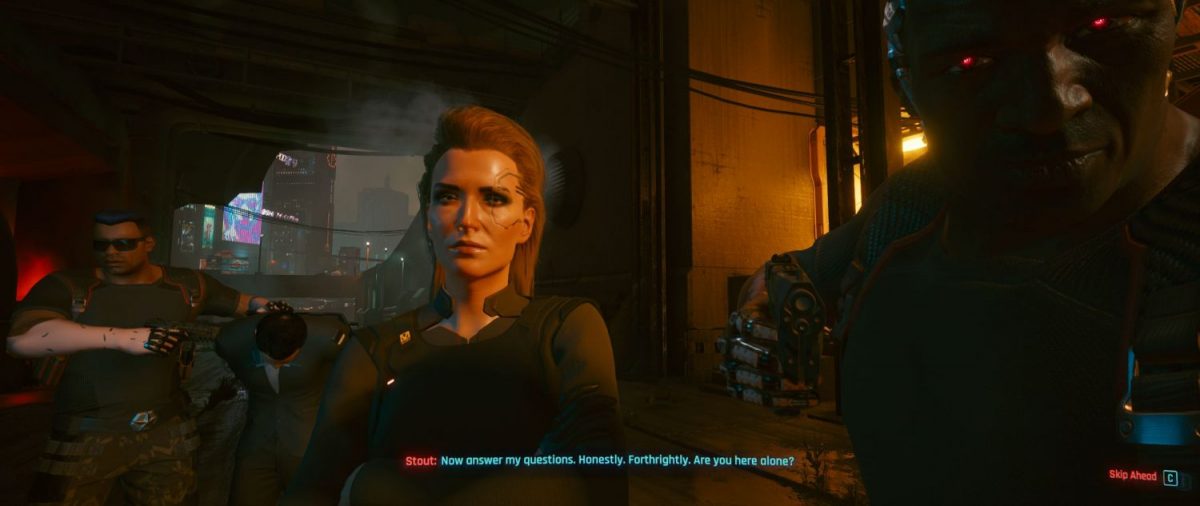
A story this nuanced and tight wouldn’t be as such without its supporting cast. Like The Witcher 3, V is surrounded by an ensemble of colourful characters that, after usually fulfilling their requests, become affiliated with the protagonist in their rise to the top. From the headstrong but loveable Jackie, to the tech-savvy but impulsive Judy, to the cold and distant, but honourable Takemura, you’ll soon be rooting for the survival of these other characters in a city in which danger lurks at every corner.
And for all its high-octane moments, Cyberpunk 2077 also offers a ton of mellower and more contemplative scenes to offer both V and the player a nice bit of respite in such a hectic environment. CDPR sure knows how to take players on an emotional and cinematic journey, and it clearly shows in this game, which is one of the main reasons why you’ll be coming back for more after your first playthrough.

Speaking of playthroughs, your first one will net you a good 50 hours at the least, which includes not just the main campaign, but also a smattering of side content. If you’re a completionist like some of us here, expect to get the upwards of 100 hours, and that’s putting it lightly (not sure if you’ve heard of one QA tester reporting not having completed the game even after 170+ hours, but yeah, that’s a thing too).
While you have your main quests coming in one after the other, you also have a bunch of other NPCs literally calling you up to help you with side ventures every 30 seconds. Before long, your backlog of quests and side quests to complete will fill up, leaving you either giddy with excitement or maybe even stress to complete them ASAP.
During your stay in Night City, you will most likely want to complete some side missions to earn some easy eddies (slang for Eurodollars, the game’s currency) and experience. There is quite a variety of side content to pursue at your own time. Gigs are quests that are given out by local fixers, which typically involve more “business”-related activities, such as taking out a gang member or cyberpsycho (basically someone who has gone insane as a result of brain damage from cybernetic augmentations), rescuing a target, or performing a small-time heist. There are “standard” side quests which are basically the pursuit and resolution of the storylines of major and minor NPCs, such as your personal allies or affiliates. There are also collectible activities, such as filling out a tarot card deck by scanning unique holographic graffiti across the city.
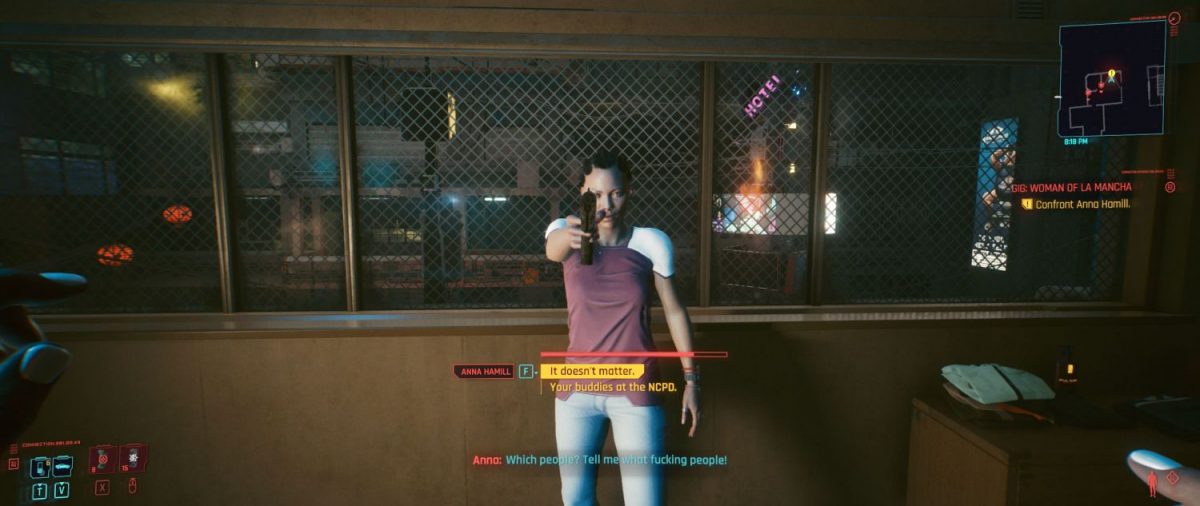
In these quests, you’ll typically have the opportunity to complete it in your own favoured playstyle (with the exceptions of certain quests, of course). Want to bust in, guns blazing and turning every single hostile body into a bloody pulp? You can certainly do that. Want to take a more bloodless route by sneaking past enemies and guards with a combination of stealth and quickhacking? There’s that option too. Shortcuts in various locations also open up if you have the required stat to open certain doors. In dialogue, you’ll also have a good amount of agency.
Dialogue options open up depending on your starting background, as well as your current stats, and these additional options often add much more nuance to already engaging conversations, and may at times even influence the outcome of quests. These are one of the small ways in which you’ll be tempted to reload an earlier save just to see how differently things might have turned out (also, remember to save often as things can go hairy real quick!).
The best part about the quest design is that CDPR is not one to shy away from doing virtually anything and everything. For every quest that involves the usual serious job there is the occasional oddball, such as escorting a man who has a malfunctioning groin implant to a local ripperdoc to fix his… problem, and even preventing a sentient cab who has gone through an existential crisis from driving itself off a cliff. These are the kinds of things that make you appreciate just how creative the writing team can be, perhaps even more so than in The Witcher games.
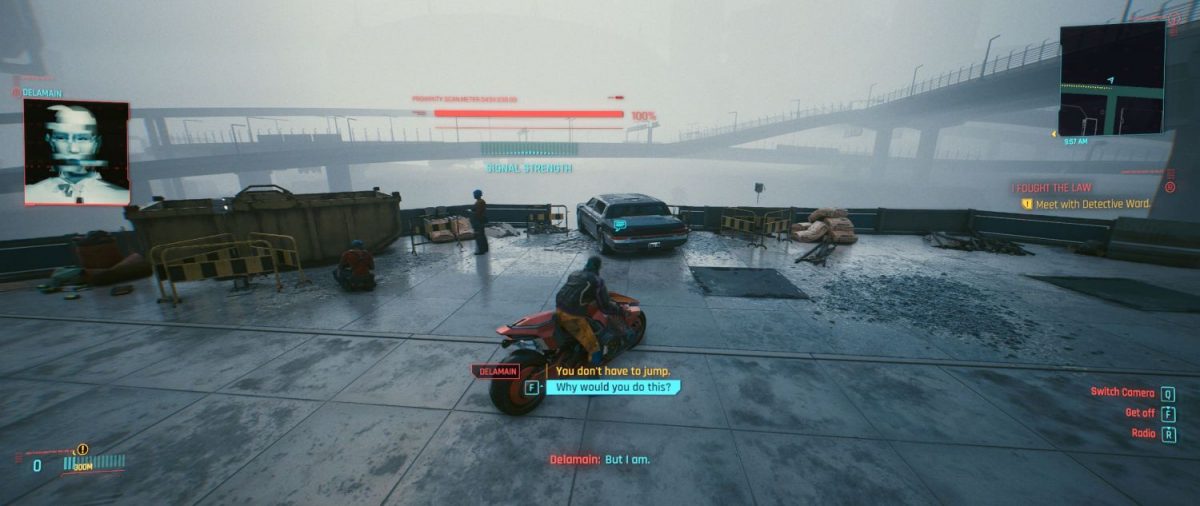
Of course, it also helps that they had tons of guidance from the original folks who developed Cyberpunk 2020, the tabletop RPG that started it all, and the one that this game was based on in the first place. In general, the overall tone and quality of writing in both main and side content is as rich and nuanced as can be, and really gives so much life to Night City in the best ways possible.
CD Projekt Red did say that the world of Cyberpunk 2077 is significantly smaller than The Witcher 3, but that said, you will still be bombarded with so many things on your radar (pun intended). Just imagine the quests in this game like a hydra: complete one, and you’ll be given three more to do. Of course, you’re in no obligation to check everything out and complete every single quest out there (though you’re most welcome to clear out everything on your current playthrough, especially if you’re gunning for all the achievements). You won’t be able to do so anyway, as some options are background-specific, so you’ll have to create a new character from a different background to be able to do so anyway.
It goes without saying that Cyberpunk 2077 is, without a doubt –wait for it — breathtaking. And dare we say it, even on the lowest settings. Seriously, this game is just jam-packed with detail, and with colours so vibrant you’ll constantly be asking yourself whether you’ve been injected with some LSD each time you jump in.
Playing this game on Ultra using a 2019 Aftershock Forge 15 Pro, using an NVIDIA GeForce RTX 2060 and 16GB of RAM, we got a relatively smooth framerate of 30fps, which did occasionally stutter in densely-packed crowds and effect-heavy gunfights. Scaling the graphics settings down to Medium, we had a much smoother time in general, with a framerate of around 50 – 60fps. This made it feel much more like an FPS game, and will appeal to those that opt for a more gun-heavy playstyle (or just want a really smooth gameplay experience in general). The dynamic range is extremely crisp, with bright colours really popping out in contrast to the deep blacks, which you will see a lot as this game is just rife with gritty and dark environments. But in essence, Cyberpunk 2077 is a technical beast, and will demand the most out of your machine if it can take the heat.
The environments are densely packed, if not with people, then with endless acres of land with which you can feast your eyes upon. CDPR makes just one city in 2077 feel like an entire world, as each of the main districts in Night City are given its own distinct flavour. From the hustling, bustling streets of Japantown drenched in neon and sex robots looking to drain every dollop (and dollar) out of you, to the vast, dusty plains of the Badlands where you and your trusty vehicle can roam free like Native Americans on horseback.
There is just so much character in virtually every square inch of Night City that you’ll no sooner be finding yourself just stopping to just admire the sights and sounds. Just like in the fictional characters in Cyberpunk 2077, it’s easy for even us, the player, to get lost in this sprawling metropolis.
Graphics are only one half of the equation of Cyberpunk 2077’s technical achievements. The sound design is done really well here, and breathes a ton of life into Night City and its denizens. Just walking down the streets for a minute gives one so much to take in not just visually, but aurally as well.
Using headphones with Dolby 7.0 surround sound or the equivalent, such as a Logitech G Pro X Wireless, enhances this experience by a mile, and gives one the impression that they are literally there in the flesh. Coupled with a predominantly first-person POV, and you may as well make this game a VR title, because it is that immersive. And add in the game’s incredible soundtrack comprising of 150 tracks which include original music by the likes of Grimes, A$AP Rocky and Tina Guo, and you have yourself a literal party in your ears each time you boot up the in-game radio on your vehicle, or even just taking a stroll down Night City’s various districts.
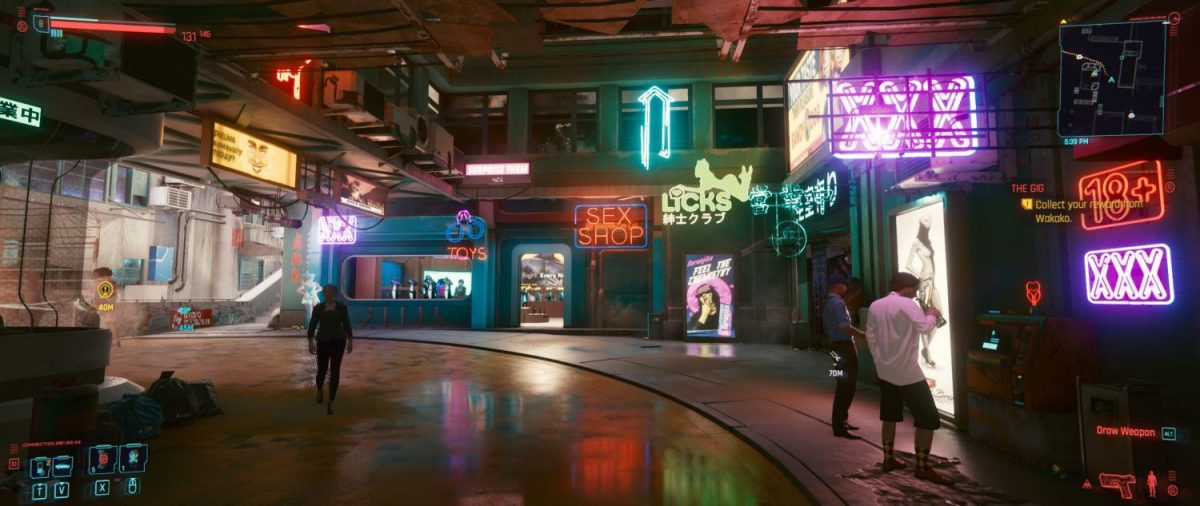
However, we did encounter little moments where the sound design of various elements would be absent without warning, such as the sound of a car being slammed shut. It does take away from the moment, but not too much to the point that it becomes too jarring. Hopefully CDPR will address this in a future update.
We’re not quite done with sound, though. Voice acting is also really quite solid, with virtually every single character given some lines in this game. Of course, the main cast, including Male and Female V, do a spectacular job here, as do the various guest stars (the names of which we will omit as we consider them easter eggs for you to discover on your own) that appear periodically throughout your playthrough.
Keanu Reeves’ Johnny Silverhand, the lynchpin of the game’s marketing, unfortunately, falls quite short with generally laboured line delivery that, more often than not, seems a more unwelcome presence (but maybe that plays into his role as a parasite to V’s overall character arc, we’ll never know) than a welcome one. That said, since you’ll be spending a lot of time with his character, you’ll eventually grow into his role as Johnny, much like how V and the character eventually come to terms with one another (or not, depending on your in-game choices).
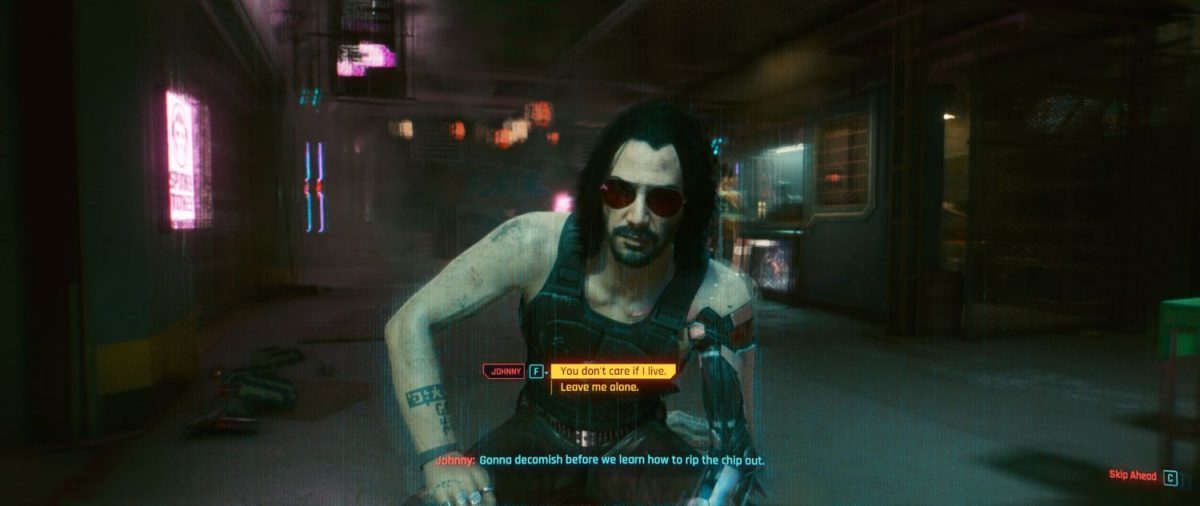
Speaking of which, creating your own V is certainly a thrill in and of itself. We certainly spent hours making multiple Vs before settling on one for a dedicated playthrough simply due to the fact that there is quite a good amount of aesthetic options here. That said, despite removing the limiter on gender, the various sliders to give your character shape available seem rather limited compared to many MMORPGs today.
Even Skyrim had a much more nuanced character builder in that regard, as you could create a character who is young or old, tall or short, skinny or fat. But here, you’re stuck with just one body type, with a bunch of flashy cybernetic aesthetics, and maybe some cool-looking eyeballs and fingernails. There’s also a missed opportunity to add more hairstyles, tattoos, cyberware and the like across your playthrough and have the option to change out your look. Yeah, a bit of an irony given how most of your game will be played in first-person, but shouldn’t really stop the studio from giving players that option as you’ll still be able to see your V in full when riding a bike in third-person mode, or snapping a screenshot in the super-fun Photo Mode.

Regardless, gameplay in Cyberpunk 2077 is a really tight and satisfying experience, but is ultimately one that is defined by the player’s personal tastes. Everything in this game is an option, a word that you by this point have encountered more than once. Because it is true; there is no right way to play this game (aside from obviously not pursuing the main quests and advancing the storyline).
You’ll have the option of either pursuing a combat-heavy playthrough by hacking and slashing and shooting your way through every single hostile encounter, or snoop around and find an alternate but typically more conservative route that minimises any bloodshed. You can equip V with various melee and ranged weapons with which to lay waste to hostiles. You can even use some basic Netrunning skills such as quickhacking to weaken enemy defenses before going in for the kill, or to disarm security cameras and turrets to slink away into the shadows. The various Perks in the skill trees tied to the five main stat groups (Body, Technical ability, Intelligence, Reflexes, Cool) add much more flair to your combat, as do weapon mods and cyberware upgrades (these are the coolest as they can even make you perform superhuman feats such as double-jumping and silent running).
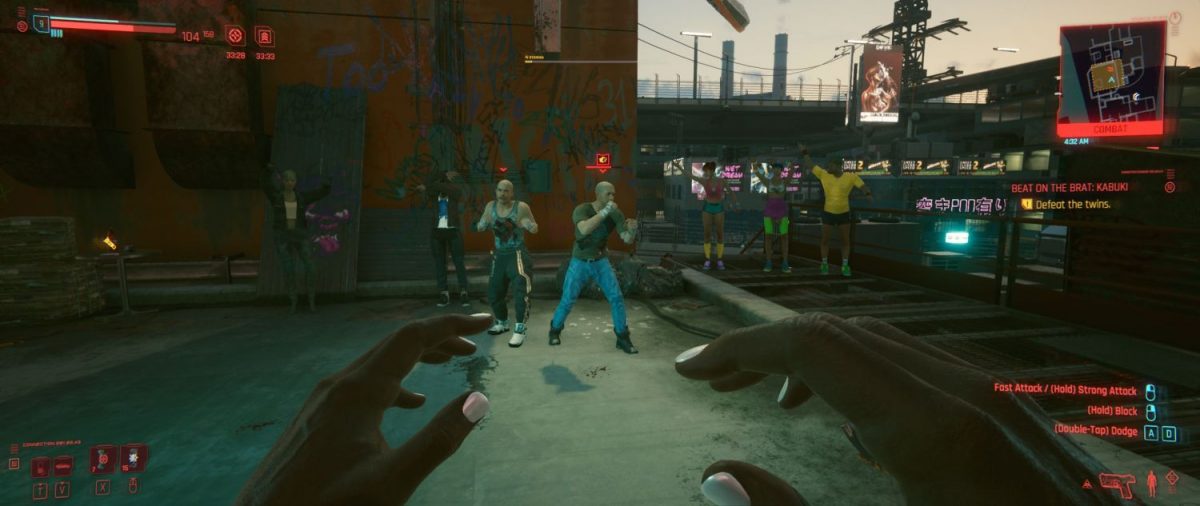
How you want to play the game from moment-to-moment is totally up to you, and you have the necessary tools available from the get-go to achieve such a feat, and it’s amazing how CDPR put painstaking efforts to give players that agency.
That said, pacifist players seem to be getting the short end of the stick, as all the various Perks one attains per level up are combat-focused, with non-combat options being limited to health regeneration outside of combat, among others. There are absolutely no ways in which to give players an added advantage in dialogue. Not even the cyberware that you spend on gives such an edge, which is a shame as some NPCs have flat-out lie detectors implanted into their bodies. Why don’t we get cool stuff like that too?
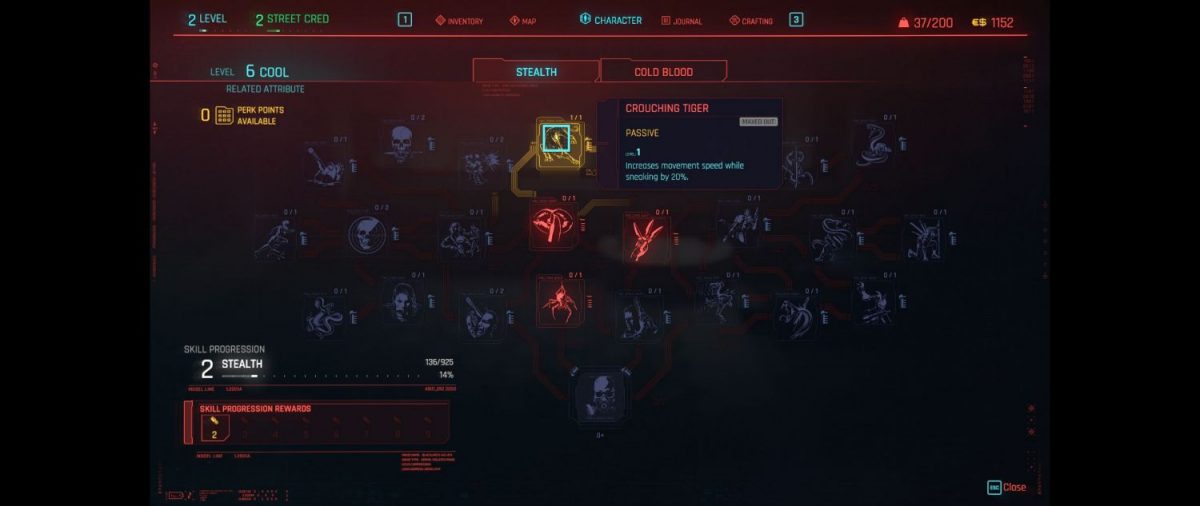
The only way around this (and is a slightly iffy option, we find), is the presence of blunt weapons such as baseball bats and your bare fists, which serve as nonlethal weapons. It’s funny that a wrench is considered a nonlethal weapon as we have heard of countless murders in which such items have been used as the paraphernalia. But oh well, we’ll take what we can get, right? Regardless, combat (or at least doing your utmost to avoid it) is still a relatively fun affair.
Perhaps what is also hampering Cyberpunk 2077’s immediate success is the various technical issues that we’ve encountered. For the most part, the majority that we’ve seen so far are small, often comical, graphical glitches, such as character models being suspended in T-poses even while moving, or literally moving through walls.
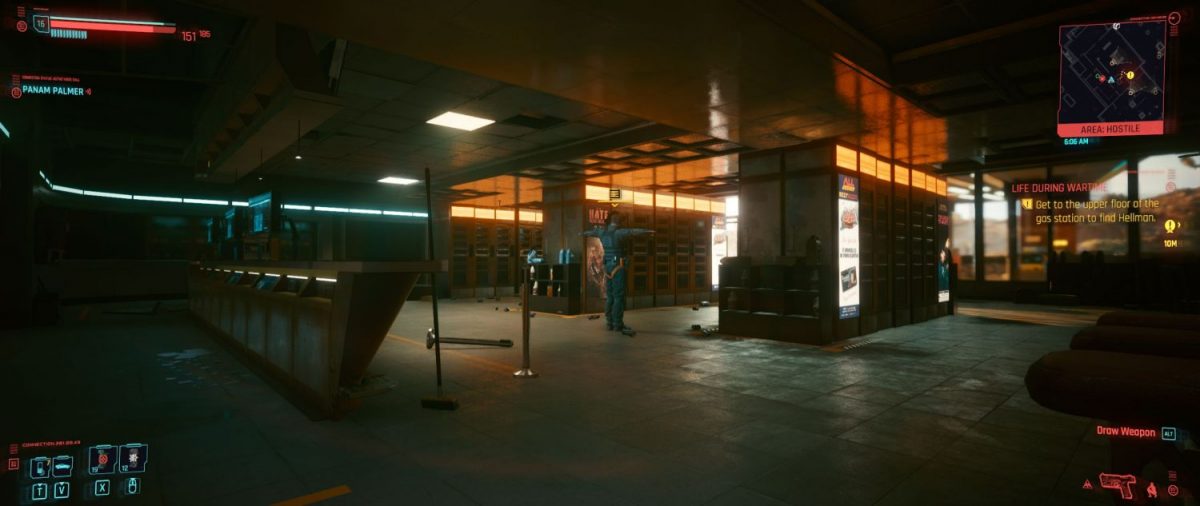
Other, more cumbersome technical issues we’ve seen include the sudden small explosion of an unconscious enemy after putting them down after a nonlethal takedown as if you killed them, which makes you wonder whether you can actually achieve a completely pacifist playthrough, or even the inability to interact with NPCs as they are stuck in a wall, prompting a reload. At one point, we even saw ourselves literally being shoved 200 metres away from a window that we were trying to climb over. These technical faults may seem harmless in isolation, but over the course of a 40- to 50-hour playthrough, they can be quite hindrances to the overall gameplay experience.
Other quality-of-life improvements CDPR could consider are making inventories much easier to navigate in general. It seems the rather messy inventory presentation from The Witcher 3 has carried over to Cyberpunk 2077, with no option to optimise one’s equipment if they don’t want to waste time sifting through all the gear they’ve collected.
When all is said and done, there really isn’t quite a game like Cyberpunk 2077. Sure, there have been the likes of the aforementioned Skyrim and Deus Ex, and by extension, Rockstar Games’ Red Dead Redemption and Grand Theft Auto franchises providing similar open-world experiences, but none so far have provided the sheer agency that this title offers. If the legend of Geralt of Rivia — which is just one character — was already eventful and nuanced enough in The Witcher games, let’s just say CDPR tripled that nuance in this game, simply due to the fact that you have three backgrounds to choose from. This game does seem to lack polish in various aspects, but it’s probably inevitable given how grand the scale of a game this is.
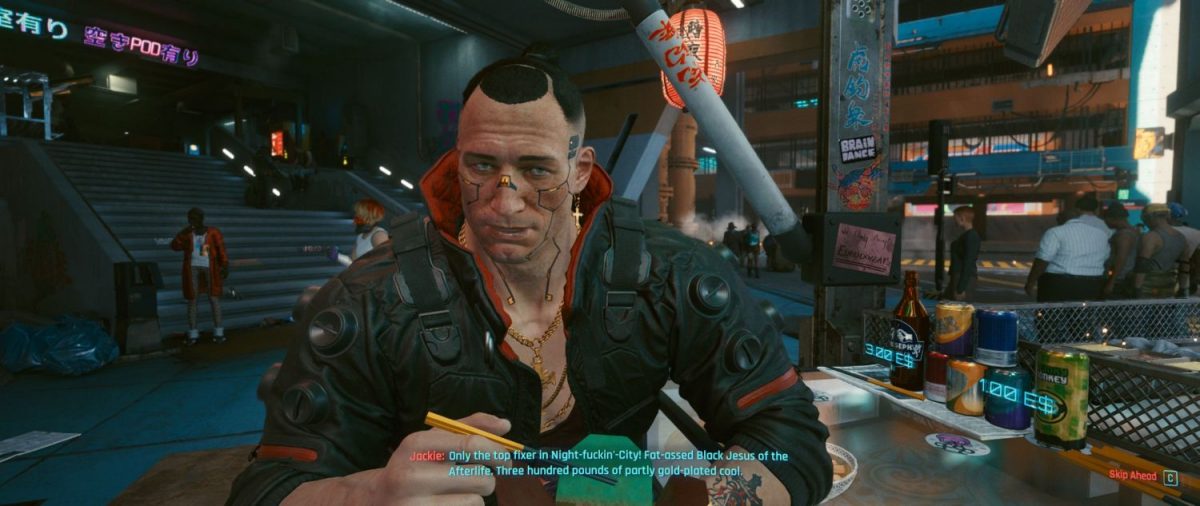
The developers did say they intend for players to be spending literal years playing this game, so that means they will have post-launch content already planned in the pipeline. Let’s just hope that they focus on tightening up the loose screws in this main title first. Do that, that you have yourself a true gem of a game — correction, experience. And knowing that they are folks that have a considerable track record of keeping their word, then be certain to expect more awesomeness to come in the near (dark) future.
GEEK REVIEW SCORE
Summary
The dark future certainly looks promising, thanks to the collective imagination of the team at CD Projekt Red, which seems to know no bounds. Cyberpunk 2077 certainly took a while to come to our hands, but be glad it’s finally here, for it is here to stay for a long time to come. And it certainly did not disappoint.
Overall
9.1/10
-
Gameplay - 8.5/10
8.5/10
-
Story - 10/10
10/10
-
Presentation - 8.5/10
8.5/10
-
Value - 9.5/10
9.5/10
Marion has a serious RPG addiction. Sometimes it bleeds into real life; he forgets to sleep because he thinks he has a Witcher’s body clock. Forgive him in advance if he suddenly blurts out terms such as “Mind Flayer” and “Magic Missile”, because never once does he stop thinking about his next Dungeons & Dragons game.


